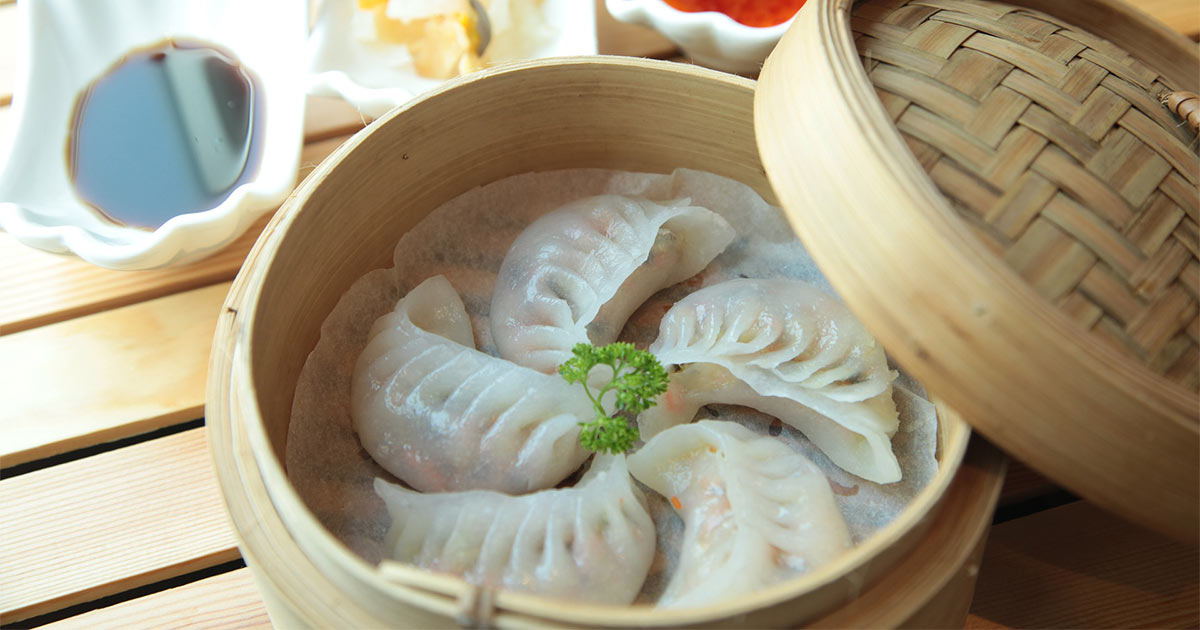
China has been perfecting the art of dumpling (also called jiaozi) making since the Sung dynasty (about 1,800 years ago). The dumplings typically consist of ground meat and/or a vegetable filling wrapped into a thinly rolled piece of dough. It is one of the major staple foods or local specialties in north China and enjoyed by many Chinese people.
In north China, people normally finish preparing dumplings before midnight and eat dumplings between 11:00 pm and 1:00 a.m. on Chuxi, the Lunar Chinese New Year’s Eve. This period of time is considered the changing point between the old and the new year.
Some families hide a coin inside one or more of the jiaozi, so someone may bite into something hard and discover a gold or silver coin inside their dumpling. Whoever finds the dumpling with the coin has good luck and will be lucky in the upcoming year. People eat dumplings during this time to pray for joy, happiness and prosperity for the new year.
The shape of the dumplings is similar to the shape of ancient Chinese money Yuan Bao, and signifies money and wealth.
I remember every Lunar New Year’s Eve when I was young, we made jiaozi with my grandparents. I remember my grandparents would cook all day to prepare dinner. They were tired from the long day, yet still had smiles and joy on their faces. It was a day of reunion, a day of happiness, a day of looking forward to the future, and the next happy and successful year.
I remember the warmth from the steaming of the jiaozi in the cold winter night. I remember the feeling of warmth, loveliness, and happiness from being together with family.
Wei Geiger is an Issaquah Highlands resident and leader of the Issaquah Highlands Meditation Group. She taught a dumpling making workshop at Blakely Hall on Jan. 17, 2020 as part of our 2020 Lunar New Year community celebration.





